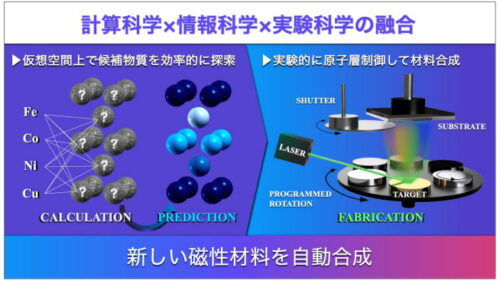2022-06-13 オランダ・デルフト工科大学(TUDelft)
将来、ヨーロッパはエネルギーの輸入を完全になくすことができるのだろうか?風力や太陽光といった再生可能なエネルギー源だけで、自国の需要を満たすことができるのだろうか?新しい研究は、これが可能であることを示している。この研究では、代替技術の選択肢とその最適な配置を探るモデリング手法を用い、費用対効果が高く、カーボンフリーで自給自足可能なヨーロッパのエネルギーシステム設計を400以上リストアップしています。オープンソースのオンラインプラットフォームにより、意思決定者、業界アナリスト、研究者は、利用可能な多くのオプションを比較できます。風力と太陽光からの変動する電力出力を管理するために、プラットフォームユーザーは、貯蔵容量、バイオ燃料、ヨーロッパ内のエネルギー分配、輸送と熱の電化など、さまざまな柔軟なテクノロジーとバランスメカニズムへの優先システムの依存度を変えることができます。「これらの要素を自由に変えることで、ユーザーはエネルギーシステム内の複雑な関係と関連するトレードオフを視覚化できます」と、デルフト工科大学の助教授で研究チームのリーダーであるStefanPfenningerは述べています。
<関連情報>
- https://www.tudelft.nl/en/2022/tu-delft/tu-delft-researchers-develop-model-for-green-energy-independent-europe
- https://www.sciencedirect.com/science/article/pii/S2542435122002367
欧州のエネルギーシステム全体で化石燃料を排除し、カーボンニュートラルを達成するための選択肢の多様性 Diversity of options to eliminate fossil fuels and reach carbon neutrality across the entire European energy system
Bryn Pickering,Francesco Lombardi,Stefan Pfenninger
Joule Published: June 8, 2022
DOI:https://doi.org/10.1016/j.joule.2022.05.009

Highlights
- Many cost-effective options exist for an energy self-sufficient, carbon-neutral Europe
- A variety of spatial configurations are valid, and specific regions can be prioritized
- Although firm capacity is not a must have, limiting it reduces the maneuvering space
- For example, low bioenergy requires electrified heat and controlled vehicle charging
Context & scale
Most studies to reach European carbon -neutrality focus on one or a few economically “optimal” scenarios, suggesting that only these system design options exist. We show a diversity of untold options to meet all energy demand based on renewable energy, with a complete phase-out of oil and gas imports. With a marginal increase above optimal cost, the reliance of an energy self-sufficient Europe on specific solutions, like biofuels, battery storage, transmission expansion, or heat electrification, can vary from not being used at all to being key to system stability.
With our work, policy makers can explore this option space. For instance, one can investigate where to locate hydrogen production hubs or look at the necessary trade-offs of imposing preferences like having to support consumers in electrifying heat and transport if biofuel use is minimized. Our code and data are open; hence, our approach can be applied to other continents or scaled to support decisions in specific regions.
Summary
Disagreements persist on how to design a self-sufficient, carbon-neutral European energy system. To explore the diversity of design options, we develop a high-resolution model of the entire European energy system and produce 441 technically feasible system designs that are within 10% of the optimal economic cost. We show that a wide range of systems based on renewable energy are feasible, with no need to import energy from outside Europe. Model solutions reveal considerable flexibility in the choice and geographical distribution of new infrastructure across the continent. Balanced renewable energy supply can be achieved either with or without mechanisms such as biofuel use, curtailment, and expansion of the electricity network. Trade-offs emerge once specific preferences are imposed. Low biofuel use, for example, requires heat electrification and controlled vehicle charging. This exploration of the impact of preferences on system design options is vital to inform urgent, politically difficult decisions for eliminating fossil fuel imports and achieving European carbon neutrality.



